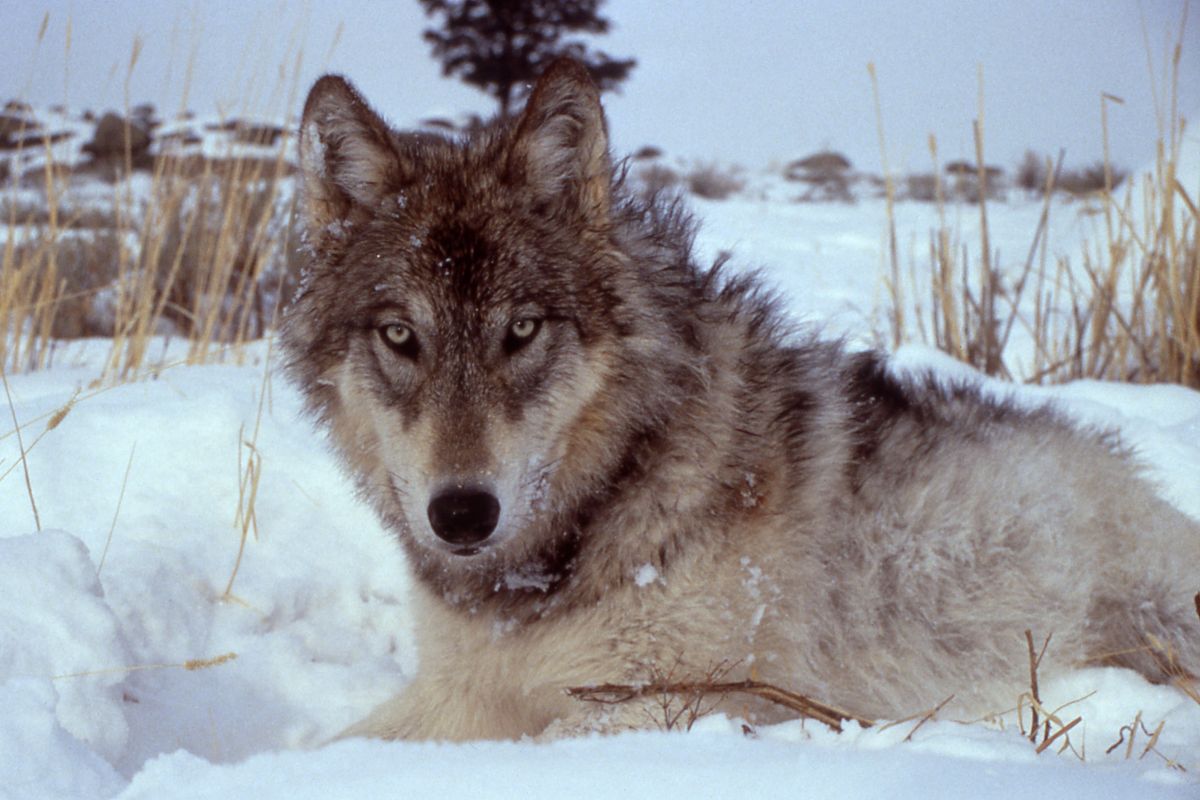Today: 20th anniversary of reintroducing wolves to Yellowstone

PREDATORS -- Today is the 20th anniversary of the reintroduction of gray wolves to Yellowstone National Park -- a day celebrated and denounced ever since.
On January 12, 1995, eight wolves from Alberta were relocated to Yellowstone National Park by U.S. Fish and Wildlife Service and National Park Service personnel. They were the first gray wolves in Yellowstone since they were extirpated in 1926—an absence of 69 years. Wolves were released in central Idaho two days later. Another six wolves arrived in Yellowstone on Jan. 20, 1995.
The goal was to restore balance to a landscape where wolves had been absent for more than 70 years.
The original 14 Yellowstone wolves – along with naturally returning packs and wolves subsequently released in 1995 as well as in 1996 in Idaho – exceeded biologists' expectations in prospering and recovering their ground in the Northern Rockies.
Some groups call the reintroduction a huge success while livestock and big-game hunting groups loathe the results.
Twenty years later, wolves have been taken off the endangered species list and are hunted and trapped as a game species in Wyoming, Montana and Idaho.
At the end of 2013, about 1,700 gray wolves roamed the Northern Rocky Mountains, according to the United States Fish and Wildlife Service.
The wolves are expanding their ranges into Washington, Oregon and some wolves have been documented branching out at least for visits into Utah, Arizona and California.
Here are some quotes from an anniversary event held Sunday in Gardner, Mont., featuring some of the original reintroduction team:
Doug Smith, current project leader for the Yellowstone Gray Wolf Restoration Project in Yellowstone National Park:
Wolves are a major part of Yellowstone and they have contributed significantly to the ecological and economic health of the Park. The goal of the Park Service is to restore natural conditions and we could not have done that in Yellowstone without wolf restoration. Another goal of the Park Service is to provide for visitor’s enjoyment and today, Yellowstone is the best place in the world to view wild wolves.
Carter Niemeyer, USA-Canada wolf reintroduction team member; retired U.S. Fish and Wildlife Service wolf recovery coordinator for Idaho.
Wolf recovery in Yellowstone and the entire Northern Rockies region has been a phenomenal success. Wolves are here to stay and it is my hope and desire that the states that now manage America’s wolves can continue the wonderful conservation legacy we have crafted for future generations.
Meanwhile, wolves have helped crop Yellowstone's elk population by more than 75 percent, and that's not necessarily great for the wolves or wolf watchers.
Spotting a wolf inside the park might take a little more luck than usual these days. In March of 2013, officials estimated that just 71 adult wolves reside within Yellowstone’s boundaries, a 14-year low and less than half of 2007’s total. Mange, a parasitic skin disease, has contributed to the decline, as has the dwindling elk population.
- National Park Service: Wolf Restoration Continued: http://www.nps.gov/yell/naturescience/wolfrest.htm
- National Park Service: Wolf Restoration: http://www.nps.gov/yell/naturescience/wolf-restoration.htm
